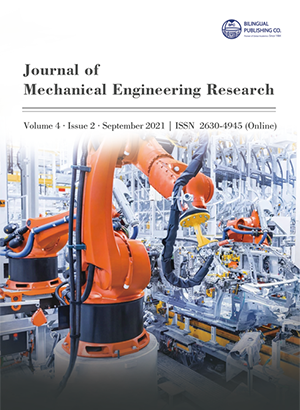Recognition Methods of Geometrical Images of Automata Models of Systems in Control Problem
DOI:
https://doi.org/10.30564/jmer.v4i2.3588Abstract
The laws of functioning of discrete deterministic dynamical systems are investigated, presented in the form of automata models defined by geometric images. Due to the use of the apparatus of geometric images of automata, developed by V.A. Tverdokhlebov, the analysis of automata models is carried out on the basis of the analysis of mathematical structures represented by geometric curves and numerical sequences. The purpose of present research is to further develop the mathematical apparatus of geometric images of automaton models of systems, including the development of new methods for recognizing automata by their geometric images, given both geometric curves and numerical sequences.
Keywords:
Discrete deterministic dynamical system; Mathematical model; Automaton; Geometric image of an automaton mapping; Geometric curve; Sequence; Recognition of geometric images of automataReferences
[1] McCulloch W.S., Pitts W. (1943). A logical calculus of the ideas immanent in nervous activity [J]. Bulletin of Math. Biophysics. 5:115-133.
[2] Agibalov G.P. (1993). Discrete automata on semilattices [M]. Tomsk.
[3] Aizerman M.A. et al. (1963). Logic. Automatons. Algorithms [C].. Fizmatgiz.
[4] Aperiodic automata [C]. (1974). Moscow, Nauka.
[5] Arbib M. (1966). Automata theory and control theory: a rapprochement.Automatica [C], 3:161-189.
[6] Arbib M. (1967). Tolerance automata . Kybernetic[J], 3:223-233.
[7] Achasova S.M. (1978). Algorithms for the synthesis of automata on programmable matrices [M]. Moscow, Radio and Communication.
[8] Aho A., Hopcroft J., Ullman J. (1979). Construction and analysis of computational algorithms [M]. Moscow, Mir.
[9] Neumann J. (1966). Theory of Self-Reproducing Automata [M]. University of Illinois Press.
[10] Tverdokhlebov, V.A. (2008). The geometrical images of laws of functioning of finite state machines [M]. Science book, Saratov.
[11] Tverdokhlebov, V.A. (2005). The geometrical images of the finite state machines [J], Proceedings of Saratov State Univercity (a New series), 5:141-153.
[12] Epifanov, A.S. (2014). Models and methods for analysis and redefining the laws of functioning of discrete dynamic systems [M], Publishing Center Science, Saratov.
[13] A. Gill (1962). Introduction to the Theory of Finite-state Machines [M]. McGraw-Hill.
[14] Epifanov A.S. (2017). Redefinition, recognition and analysis of automatic models of systems by their geometric images [C]. Proceedings of MLSD‘2017 conference: Management of Large-Scale Systems Development (MLSD‘2017).
[15] http://oeis.org/.
[16] Steinberg B. (2001). Finite state automata: a geometric approach [J]. Transactions of the american mathematical society. 9:3409-3464.
[17] J¨urgensena H., Staigerc L., Hideki Yamasakid. (2007). Finite automata encoding geometric figures [J]. Theoretical Computer Science. 381: 33-43.
[18] Schneider S. (2019). Deterministic pushdown automata as specifications for discrete event supervisory control in Isabelle [D]. Technische Universität Berlin.
[19] Sergey Yu. Melnikov, Konstantin E. Samouylov. (2020) Polygons characterizing the joint statistical properties of the input and output sequences of the binary shift register [C]. ICFNDS ‚20: The 4th International Conference on Future Networks and Distributed Systems (ICFNDS). Article No.: 10 Pages 1–6 https://doi.org/10.1145/3440749.3442601.
[20] Rosin P., Adamatzky A., Xianfang Sun. (2014). Cellular automata in image processing and geometry [C], Springer.
[21] Su, R., van Schuppen, J.H., Rooda, J.E., and Hofkamp, A.T. (2010). Nonconflict check by using sequential automaton abstractions based on weak observation equivalence. Automatica, 46(6), 968-978.
[22] www.xilinx.com.
Downloads
Issue
Article Type
License
Copyright © 2021 Anton Epifanov

This is an open access article under the Creative Commons Attribution-NonCommercial 4.0 International (CC BY-NC 4.0) License.




 Anton Epifanov
Anton Epifanov

